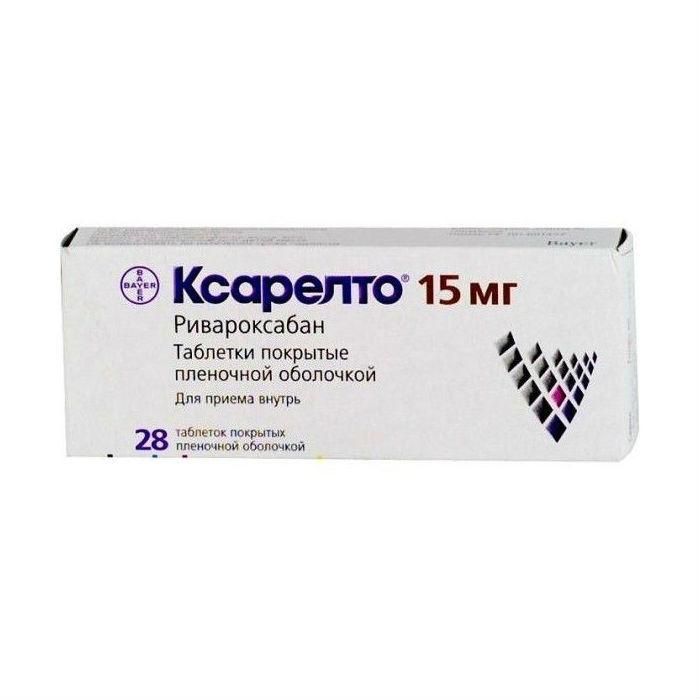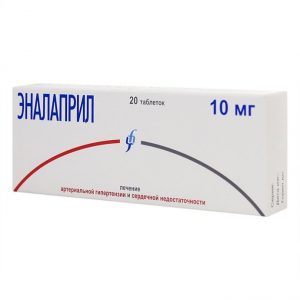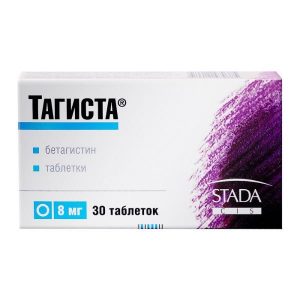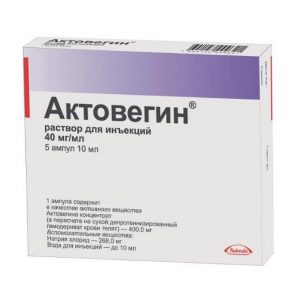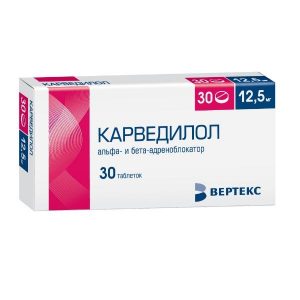Description
Release form
film-coated tablets.
Packing
28 pcs.
Pharmacological action
Xarelto is a direct-acting anticoagulant. Rivaroxaban is a highly selective direct factor Xa inhibitor with high oral bioavailability.
Activation of factor X with the formation of factor Xa through the internal and external coagulation pathways plays a central role in the coagulation cascade.
A dose-dependent inhibition of factor Xa has been observed in humans. Rivaroxaban has a dose-dependent effect on prothrombin time and is closely correlated with plasma concentrations (r = 0/98), if Neoplastin kit is used for analysis. When using other reagents, the results will be different.
Prothrombin time should be measured in seconds, since MHO is calibrated and certified only for coumarin derivatives and cannot be used for other anticoagulants. In patients undergoing major orthopedic surgery, the 5/95 percentile for prothrombin time (Neoplastin) 2-4 hours after taking the pill (i.e., at the maximum effect) varies from 13 to 25 seconds. Rivaroxaban also dose-dependently increases APTT and the result of HepTest, however, these parameters are not recommended for evaluating the pharmacodynamic effects of rivaroxaban. Rivaroxaban also affects the activity of the anti-Xa factor, but there are no standards for calibration.
During treatment with rivaroxaban, monitoring of blood coagulation parameters is not required.
In healthy men and women over 50 years of age, prolongation of the QT interval under the influence of rivaroxaban was not observed.
Indications
Prevention of venous thromboembolism (VTE) in patients undergoing major orthopedic surgery on the lower extremities.
Contraindications
Clinically significant active bleeding, for example:
Intracranial bleeding.
Gastrointestinal bleeding.
Diseases of the liver that occur with coagulopathy, which causes a clinically significant risk of bleeding.
Pregnancy.
Lactation (lactation).
Children and adolescents under 18 years of age (efficacy and safety for patients of this age group have not been established).
Hypersensitivity to rivaroxaban or any excipients contained in the tablet.
The use of rivaroxaban has not been studied in clinical trials in surgical interventions in patients for a fracture of the femur. Therefore, the use of rivaroxaban is not recommended for this category of patients.
Clinical data on the use of rivaroxaban in patients with severe renal failure (CC <15 ml / min) are not available. Therefore, the use of rivaroxaban is not recommended for this category of patients. Special instructions The use of rivaroxaban has not been studied in clinical trials for surgical interventions for hip fractures. With an unexplained decrease in hemoglobin or blood pressure, it is necessary to look for a source of bleeding. No lengthening of the QT interval was observed during treatment with rivaroxaban. When performing spinal puncture and epidural / spinal anesthesia for patients receiving platelet aggregation inhibitors to prevent thromboembolic complications, there is a risk of developing epidural or spinal hematoma, which can lead to prolonged paralysis. The risk of these events is further increased with the use of permanent catheters or the concomitant use of drugs that affect hemostasis. Injury during epidural or spinal puncture or repeated puncture can also increase the risk. Patients should be monitored to detect signs or symptoms of neurological disorders (e.g., numbness or weakness of the legs, bowel or bladder dysfunction). In the detection of neurological disorders, urgent diagnosis and treatment is necessary. The physician must compare the potential benefits and risks before performing spinal intervention in patients receiving anticoagulants or preparing to receive anticoagulants to prevent thrombosis. The epidural catheter is removed no earlier than 18 hours after the last dose of rivaroxaban. Rivaroxaban should not be prescribed earlier than 6 hours after extraction of the epidural catheter. In case of traumatic puncture, the administration of rivaroxaban should be postponed for 24 hours. Safety data obtained from preclinical studies With the exception of effects associated with increased pharmacological action (bleeding), in the analysis of preclinical data obtained in studies on pharmacological safety, no specific danger to humans was found. Influence on the ability to drive vehicles and control mechanisms Studies of the effects of rivaroxaban on the ability to drive vehicles and work with potentially dangerous moving mechanisms have not been conducted. In the postoperative period, cases of fainting and dizziness have been infrequent. Patients who experience these adverse reactions should not drive vehicles or work with moving machinery. Dosage and administration of The drug is taken orally with food. If the patient is not able to swallow the tablet whole, the Xarelto® tablet can be crushed and mixed with water or liquid food, such as applesauce, immediately before use. After taking the crushed tablet Xarelto® 15 mg or 20 mg, you must immediately take a meal. The crushed Xarelto® tablet can be entered through a gastric tube. The position of the probe in the digestive tract must be additionally agreed with the doctor before taking the drug Xarelto®. The crushed tablet should be administered through a stomach tube in a small amount of water, after which it is necessary to introduce a small amount of water in order to wash off the remnants of the drug from the walls of the probe. After taking the crushed tablet Xarelto® 15 mg or 20 mg, you must immediately take an enteral nutrition. Prevention of stroke and systemic thromboembolism in patients with atrial fibrillation of non-valve origin The recommended dose is 20 mg 1 time / day. For patients with impaired renal function (CC 49-30 ml / min), the recommended dose is 15 mg 1 time / day. The recommended maximum daily dose is 20 mg. Xarelto® therapy should be considered a long-term treatment, carried out until the benefit of the treatment exceeds the risk of possible complications. Actions for skipping a dose of If the next dose is missed, the patient should immediately take Xarelto® and the next day continue regular administration of the drug in accordance with the recommended regimen. Do not double the dose you are taking to compensate for a previously missed dose. Treatment of DVT and pulmonary embolism and prevention of relapse of DVT and pulmonary The recommended initial dose for the treatment of acute DVT or pulmonary embolism is 15 mg 2 times / day for the first 3 weeks, followed by a transition to a dose of 20 mg 1 time / day for further treatment and prevention of relapse DVT and TELA. The maximum daily dose is 30 mg during the first 3 weeks of treatment and 20 mg with further treatment. The duration of treatment is determined individually after carefully weighing the ratio of the benefits of treatment and the risk of bleeding. The minimum duration of treatment (at least 3 months) should be based on an assessment of reversible risk factors (i.e., previous surgery, trauma, immobilization period). The decision to extend the course of treatment for a longer time is based on an assessment of persistent risk factors, or in the case of idiopathic DVT or pulmonary embolism. Actions for skipping a dose of It is important to adhere to the established dosing regimen. If the next dose is missed with a dosing regimen of 15 mg 2 times / day, the patient should immediately take Xarelto® to achieve a daily dose of 30 mg. Thus, two 15 mg tablets can be taken at once. The next day, the patient should continue taking the drug regularly in accordance with the recommended regimen. If the next dose is missed with a dosing regimen of 20 mg 1 time / day, the patient should immediately take Xarelto® and the next day continue regular administration of the drug in accordance with the recommended regimen. Individual patient groups Dose adjustment is not required depending on the patient’s age (over 65), gender, body weight, or ethnicity. Xarelto® is contraindicated in patients with liver disease accompanied by coagulopathy, which causes a clinically significant risk of bleeding. Patients with other liver diseases do not require dose changes. Limited clinical data available obtained in patients with moderate liver failure (class B according to the Child-Pugh classification) indicate a significant increase in the pharmacological activity of the drug. For patients with severe hepatic impairment (Child-Pugh class C), clinical data are not available. When prescribing Xarelto® to patients with renal failure (CC 80-50 ml / min) dose adjustment is not required. In the prevention of stroke and systemic thromboembolism in patients with non-valvular atrial fibrillation with renal failure (CC 49-30 ml / min), the recommended dose is 15 mg 1 time / day. In the treatment of DVT and pulmonary embolism and relapse of DVT and pulmonary embolism in patients with renal failure (CC 49-30 ml / min) dose adjustment is not required. Limited clinical data available obtained in patients with renal failure (CC 29-15 ml / min), demonstrate a significant increase in the concentration of rivaroxaban in these patients. For the treatment of this category of patients, Xarelto® should be used with caution. The use of Xarelto® in patients with CC <15 ml / min is not recommended. Transition of patients from vitamin K antagonists (AVKs) to Xarelto® For the prevention of stroke and systemic thromboembolism, discontinue AVK treatment and begin treatment with Xarelto® with a MHO value of 3. For DVT and pulmonary embolism, discontinue AVC treatment and begin treatment with Xarelto® with a MHO value of 2.5. When switching patients from AVK to Xarelto®, after taking Xarelto®, the MHO values ??will be erroneously increased. The MHO value is not suitable for determining the anticoagulant activity of Xarelto® and therefore it should not be used for this purpose. Transition from Xarelto® to vitamin K antagonists (AVKs) There is a likelihood of insufficient anticoagulant effect when switching from Xarelto® to AVKs. In this regard, it is necessary to ensure a continuous sufficient anticoagulant effect during such a transition using alternative anticoagulants. It should be noted that Xarelto® may contribute to an increase in MHO. Patients who have switched from Xarelto® to AVK should take AVK at the same time until MHO reaches? 2. During the first two days of the transition period, a standard dose of AVK should be used, followed by a dose of AVK, determined depending on the value of MHO. Thus, during the simultaneous use of Xarelto® and AVK MHO should be determined no earlier than 24 hours after the previous dose, but before the next dose of Xarelto®. After stopping the use of Xarelto®, the MHO value can be reliably determined 24 hours after the last dose. Transition from parenteral anticoagulants to Xarelto® In patients receiving parenteral anticoagulants, the use of Xarelto® should be started 0-2 hours before the next scheduled parenteral administration of the drug (for example, low molecular weight heparin) or at the time of discontinuation of continuous parenteral administration of the drug (for example in / in the introduction of unfractionated heparin). Switching from Xarelto® to parenteral anticoagulants Discontinue Xarelto® and administer the first dose of parenteral anticoagulant at the moment when it was necessary to take the next dose of Xarelto®. Cardioversion for the prevention of stroke and systemic thromboembolism Treatment with Xarelto® can be started or continued in patients who may require cardioversion. With cardioversion under the control of transesophageal echocardiography (CPE-KG) in patients who have not previously received anticoagulant therapy, treatment with Xarelto® should be started at least 4 hours before cardioversion to ensure adequate anticoagulation. Side effects of From the hematopoietic system: often – anemia (including the appropriate laboratory parameters), infrequently – thrombocythemia (including high platelet count). From the cardiovascular system: infrequently – tachycardia, arterial hypotension (including lowering blood pressure, hypotension during the procedure). From the digestive system: often – nausea, increased activity of GGT, transaminases (including ALT, ACT). Infrequently – constipation, diarrhea, abdominal pain (including pain in the upper abdomen, discomfort in the stomach), dyspepsia (including discomfort in the epigastrium), dry mouth, vomiting, increased activity of lipase, amylase, LDH, alkaline phosphatase, increased bilirubin concentration. Rarely – impaired liver function, increased concentration of conjugated bilirubin (with a concomitant increase in ALT activity or without it). From the side of the central nervous system: infrequently – dizziness, headache, short-term loss of consciousness (including syncope). From the urinary system: infrequently – renal failure (including increased creatinine concentration, increased urea concentration). From the blood coagulation system: often – hemorrhages after the procedures (including postoperative anemia and bleeding from the wound). Infrequently – hemorrhage (including hematoma and rare cases of muscle hemorrhage), gastrointestinal bleeding (including bleeding from the gums, rectum, bloody vomiting), hematuria (including microhematuria), genital tract hemorrhage (including menorrhagia), nosebleeds. On the part of the body as a whole: infrequently – local edema, poor health (including fatigue, general weakness), fever, peripheral edema. Allergic reactions: infrequently – itching (including rare cases of generalized itching), rash, urticaria (including rare cases of generalized urticaria). Rarely – allergic dermatitis. Other: infrequently – post-traumatic hematomas, discharge from the wound, pain in the limbs. In other clinical studies of rivaroxaban , isolated cases of hemorrhage in the adrenal gland and conjunctiva, as well as bleeding from a gastrointestinal ulcer with a fatal outcome, have been described. In rare cases, jaundice and hypersensitivity have been reported. Infrequently – hemoptysis. Single intracranial bleeding has been described, especially in patients with arterial hypertension and / or taking concomitant antihemostatic drugs, which in rare cases can be potentially life-threatening. Drug interactions Pharmacokinetic interactions Rivaroxaban is excreted primarily through metabolism in the liver mediated by the P450 cytochrome system (CYP3A4, CYP2J2) and also by renal excretion of the unchanged drug (P-rp-gp transporter / breast cancer resistance protein). Rivaroxaban does not inhibit or induce the CYP3A4 isoenzyme and other important cytochrome isoforms. The simultaneous use of Xarelto ® and powerful inhibitors of the isoenzyme CYP3A4 and P-glycoprotein can lead to a decrease in renal and hepatic clearance of rivaroxaban and, thus, significantly increase its systemic effect. The combined use of Xarelto ® and the azole antifungal ketoconazole (400 mg once daily), a potent inhibitor of CYP3A4 and P-glycoprotein, led to a 2.6-fold increase in the average equilibrium AUC of rivaroxaban by a factor of 2.6 and a 1.7-fold increase in the average Cmax of rivaroxaban by 1.7 times , which was accompanied by a significant increase in the pharmacodynamic action of the drug. Co-administration of Xarelto ® and HIV protease inhibitor ritonavir (600 mg 2 times a day), being a powerful inhibitor of CYP3A4 and P-glycoprotein, it led to an increase in the average equilibrium AUC of rivaroxaban by 2.5 times and an increase in the average Cmax of rivaroxaban by 1.6 times, which was accompanied by a significant increase in the pharmacodynamic action of the drug. In this regard, Xarelto ® is not recommended for use in patients receiving systemic treatment with antifungal drugs of the azole group or HIV protease inhibitors (see section “With caution”). Clarithromycin (500 mg 2 times a day), a potent inhibitor of the CYP3A4 isoenzyme and a moderate inhibitor of P-glycoprotein, caused a 1.5-fold increase in AUC and a 1.4-fold increase in Cmax of rivaroxaban. This increase is in the order of normal variability of AUC and Cmax and is considered clinically insignificant. Erythromycin (500 mg 3 times a day), a moderate inhibitor of the isoenzyme CYP3A4 and P-glycoprotein, caused an increase in AUC and Cmax of rivaroxaban by 1.3 times. This increase is in the order of normal variability of AUC and Cmax and is considered clinically insignificant. Fluconazole (400 mg once daily), a moderate inhibitor of the CYP3A4 isoenzyme, caused a 1.4-fold increase in the average AUC of rivaroxaban and a 1.3-fold increase in the average Cmax. This increase is in the order of normal variability of AUC and Cmax and is considered clinically insignificant. The combined use of Xarelto ® and rifampicin, a potent inducer of CYP3A4 and P-glycoprotein, led to a decrease in the average AUC of rivaroxaban by approximately 50% and a parallel decrease in its pharmacodynamic effects. The combined use of rivaroxaban with other strong CYP3A4 inducers (e.g. phenytoin, carbamazepine, phenobarbital or hypericum perforatum preparations) can also lead to a decrease in plasma concentrations of rivaroxaban. A decrease in plasma concentrations of rivaroxaban in blood plasma is recognized as clinically insignificant. Strong CYP3A4 inducers must be used with caution. Pharmacodynamic interactions After the simultaneous use of enoxaparin sodium (single dose of 40 mg) and Xarelto ® (single dose of 10 mg), a cumulative effect was observed in relation to the activity of anti-factor Xa, which was not accompanied by additional summation effects in relation to samples on blood coagulation (prothrombin time APTT). Enoxaparin sodium did not alter the pharmacokinetics of rivaroxaban (see the “Caution” section). No pharmacokinetic interaction between Xarelto ® (15 mg) and clopidogrel (loading dose of 300 mg followed by a maintenance dose of 75 mg) was found, but a significant increase in bleeding time was found in the patient subgroup, which did not correlate with the degree of platelet aggregation and the content of P-selectin or GPIIb / IIIa receptor (see “Caution”). After the combined use of Xarelto ® (15 mg) and naproxen at a dose of 500 mg, a clinically significant increase in bleeding time was not observed. However, in individuals, a more pronounced pharmacodynamic response is possible. Transfer of patients from warfarin (INR from 2.0 to 3.0) to Xarelto ® (20 mg) increased prothrombin time / INR (Neoplastin) to a greater extent than this would be expected with a simple summation of effects (individual INR values can reach 12), while the effect on APTT, suppression of factor Xa activity, and the endogenous thrombin potential were additive. If you need to study the pharmacodynamic effects of Xarelto ® during the transition period, you can use the definition of anti-Xa, PiCT and HepTest ® activity as necessary tests that are not affected by warfarin. Starting from the 4th day after stopping the use of warfarin, all test results (including PV, APTT, inhibition of factor Xa activity and EPT (endogenous thrombin potential)) reflect only the effect of Xarelto ® (see section Dosage and Administration). No pharmacokinetic interactions have been reported between warfarin and Xarelto ®. Incompatibility: unknown. Effect on laboratory parameters Xarelto ® has an effect on blood coagulation (PV, APTT, HepTest ®) due to its mechanism of action. Overdose Rare cases of overdose have been reported when taking rivaroxaban up to 600 mg without the development of bleeding or other adverse reactions. Due to limited absorption, a saturation effect is expected without further increasing the average plasma rivaroxaban content at hypertherapeutic doses of 50 mg or higher. The specific antidote for rivaroxaban is unknown. In case of overdose, activated charcoal can be used to reduce the absorption of rivaroxaban. Given the intense binding to plasma proteins, it is expected that rivaroxaban will not be excreted during dialysis. Storage Conditions The product should be stored out of the reach of children at a temperature not exceeding 30 ° C. The Expiration of is 3 years. active substance Rivaroxaban lekarstvennaja tablet form Indications Indications Prevention of thrombosis, Prevention of acute myocardial infarction, Angina pectoris, Prevention of heart attacks and strokes
